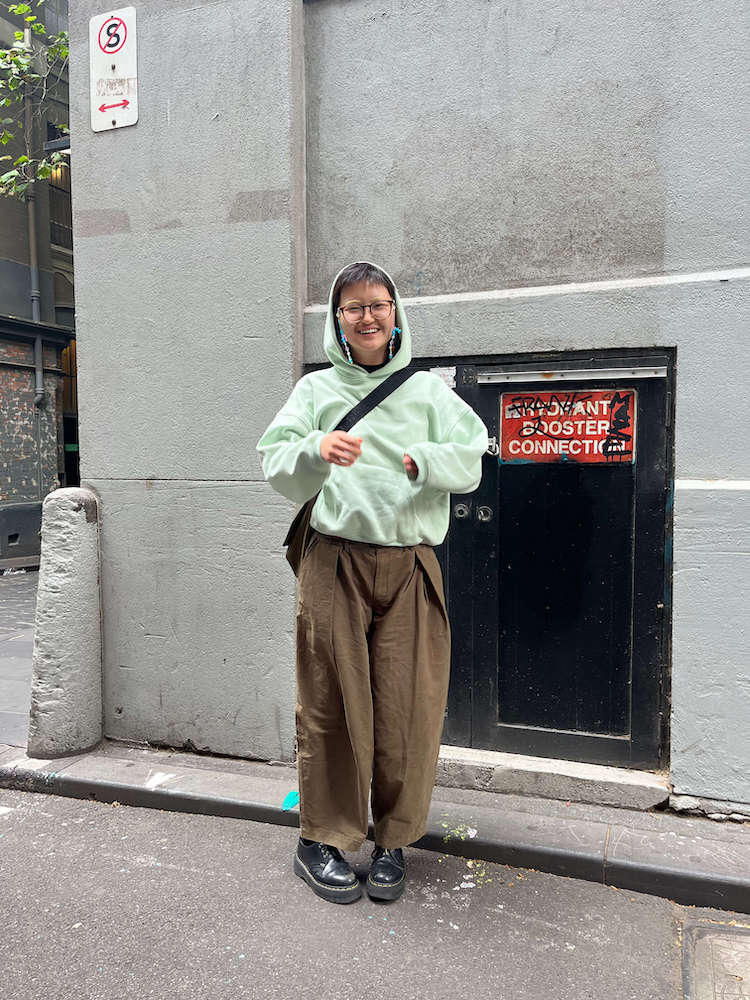
Whether you’re transitioning or just exploring what makes you feel good, chest binding is a simple way to change your body’s silhouette. Binding isn’t always about gender affirmation (although it can be effective for a lot of people in that department!), it’s also a way to traverse the landscape of fashion and self-expression without invasive procedures or permanent changes to your body.
Chest binding, according to TransHub, is “a way we can engage with our bodies to help us look or feel a certain way.”. Any form of expression is a means to explore our individuality, and it’s important to be curious about what helps us feel more comfortable in our own bodies.
Interested to hear how others navigate the world? Head to our Life section.
But improper binding can lead to multiple complications, both long-term and short-term. This is why it’s extremely important to practice safe binding, to avoid any musculoskeletal issues that can cause back and chest pain, shortness of breath or skin damage. It’s especially important for developing teens to listen to their bodies and recognise any pain and discomfort, to avoid long-term damage to their chest and back.
As someone who has been binding most days of the week for nearly two years now, I’ve found my preferences for binding and what makes me feel the most comfortable and affirmed. It’s important to experiment, and if you don’t have the means to, there are plenty of LGBTQ+ organisations that can help out with this, such as Queerspace if you’re in Naarm.
Important precautions for chest binding
Whether it’s your first or 100th time binding, remember to take regular breaks and never bind for more than nine hours a day. Always check in with your body to see if you have any particular pains or discomforts in the chest and back area.
Make sure to stretch before and after binding as well! Taking good care of the muscles that help you breathe means you can worry less about binding in the future, bruising your ribs and developing long-term back pain.
Binding involves compressing your chest, which will make exercise more difficult. Make sure you’re not binding while you’re exercising, which can restrict your breathing and movement and can lead to unwelcome cramping and stiffness, or even fainting. Good alternatives include sports bras or crop tops and oversized tees.
Additionally, if you’re feeling hot or flushed (especially if you’re taking testosterone), make sure to roll up your binder in the bathroom or somewhere private, and allow yourself to cool down and breathe. If it’s too tight to breathe, size up – don’t compromise comfort and health for compression, it’s never worth it and there are always alternatives.
Binding tops

Chest binding tops feature binding panels at the front, which help compress your breast tissue. I can’t stress enough how important it is to read the measurements for binding tops, as binders that are too small will affect your breathing and long-term musculoskeletal health if you bind for long hours regularly. As a binding option, they aren’t very technical, I just find them difficult to take off and put on if I’m too sweaty.
Personally, I have a love-hate relationship with binding tops as I have very specific sensory needs in binders. However, I’ve loved my ones from Sock Drawer Heroes and Amor Sensory the most – both are a bit of an investment, but it was worth it for my comfort!
Pros: Easy to use, plenty of options out there, reusable and washable, companies are relatively helpful with sizing.
Cons: Can be expensive and tricky with sizing, can only bind for a short period of time, and can get very sweaty when it’s hot.
Binding tape

Binding tape is a special tape that’s safe for wearing on the skin, unlike duct tape or electrical tape. It’s super comfortable and can be worn for multiple days and in the shower, however, they’re very tricky to put on the first few times you use them, especially if you’re someone with more breast tissue.
I haven’t personally found binding tape to be very effective at chest compression, but it’s a good option if you need a break from the workout that is putting on and taking off a binding top.
To use binding tape, I first stick a piece of tissue on the nipple so it isn’t painfully ripped off when it’s time to take it off. I start near the middle of my chest and lean forward as I tape my breast tissue back. The first time I used it, I taped my skin too taut and found it difficult to breathe – you should be able to comfortably breathe and go about your business without much restraint.
I followed a video tutorial here and used the Sock Drawer Heroes Mixtape. I’d also recommend using wider tape if you’re first starting to cover more area.
Pros: It’s very comfortable and you don’t have to worry about it for a longer period of time.
Cons: It’s much more technical and more difficult to apply, not reusable, and can be irritating for sensitive skin. For me, it’s also got less of a flattening effect due to my larger breast tissue.
Shirt layering

The simplest form of binding isn’t really binding at all. It’s wearing a combination of different shirts that allow you to achieve a silhouette using what you already have, which may be sports bras or tighter singlets layered underneath baggier button-downs and light jackets.
When your body needs a break from binding, it’s important to check in with a doctor or physio to see if your muscles are doing okay, and generally, just resting your body if it becomes too much of a strain for you. You can always consider sizing up your binder if it becomes too restrictive on your breathing and movement.
Although chest binding has significantly positive effects for a lot of people, especially those in trans and gender diverse communities, remember that your lungs have a very important function that fuels all of your daily activities. Taking care of them should be a number-one priority.
For more on binding your chest safely, head here.
This article A beginner’s guide to chest binding safely appeared first on Fashion Journal.
2025-04-29 08:37:00
#beginners #guide #chest #binding #safely
Source link
















